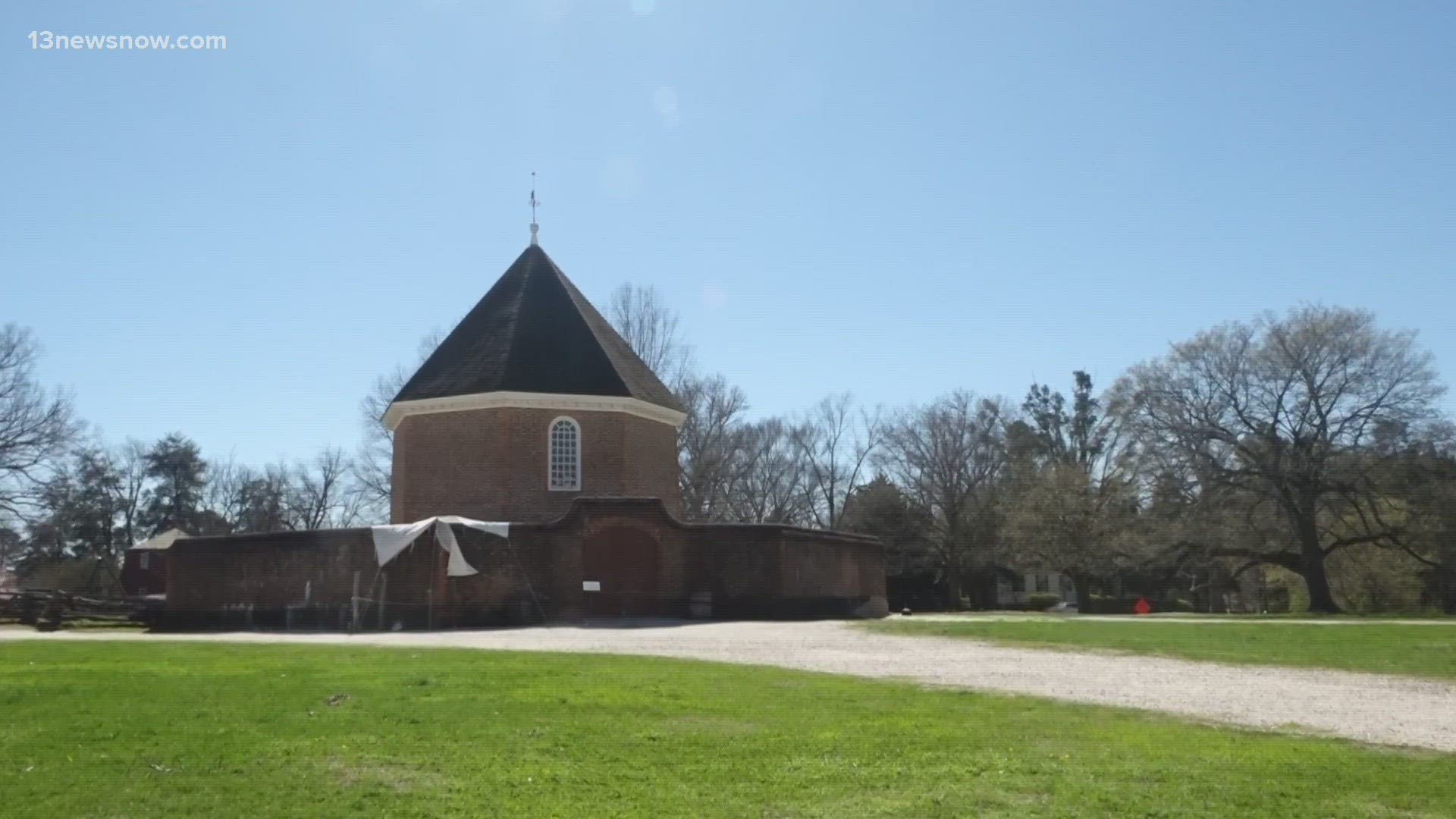WILLIAMSBURG, Va. — Another historic discovery in Colonial Williamsburg.
Scientists uncovered a new set of human remains, and research traces them back to the Civil War.
Jack Gary, director of archaeology for Colonial Williamsburg, said his team made the discovery nearly a year ago at the site of the old powder magazine on Duke of Gloucester Street.
The building once stored guns and ammunition in the 1700s. In efforts to restore it, archaeologists began digging to learn more about the facility's history. That’s when they stumbled upon the historic discovery.
Studies now link the remains to the 1862 Battle of Williamsburg, part of the Civil War.
“Are they Union soldiers, Confederate soldiers or possibly even civilians who were caught in the battle?” he said.
According to Gary, there’s still much researchers do not know, including how many people are buried beyond the structure’s brick wall, which is currently closed to visitors.
Over the course of the year, they’ve been trying to figure out what to do with these remains.
“We are really seeing that there is so much more for us to learn,” said Gary.
During the Civil War era, people would bury the dead in mass graves with the intent to later move them to a better location. But that didn’t happen in this case, said Gary.
So with permission from the Commonwealth, scientists plan to study the remains and then rebury them somewhere more appropriate.
“We decided that they were never meant to be buried in these mass graves,” he said.
Upon discovery, Gary said archaeologists placed the remains back where they were found, and they began proper protocols, which includes requesting a burial permit from the Virginia Department of Historic Resources to exhume those remains.
It’s the latest case of unearthed history keeping Gary and local archaeologists busy.
Just blocks away, they are studying human remains found at the site of the Historic First Baptist Church, one of the oldest Black churches in the country.
Scientists plan to remove the bones carefully and take them to the Institute for Historical Biology at William and Mary to be studied more.
They will also take samples of the bones for DNA analysis.

